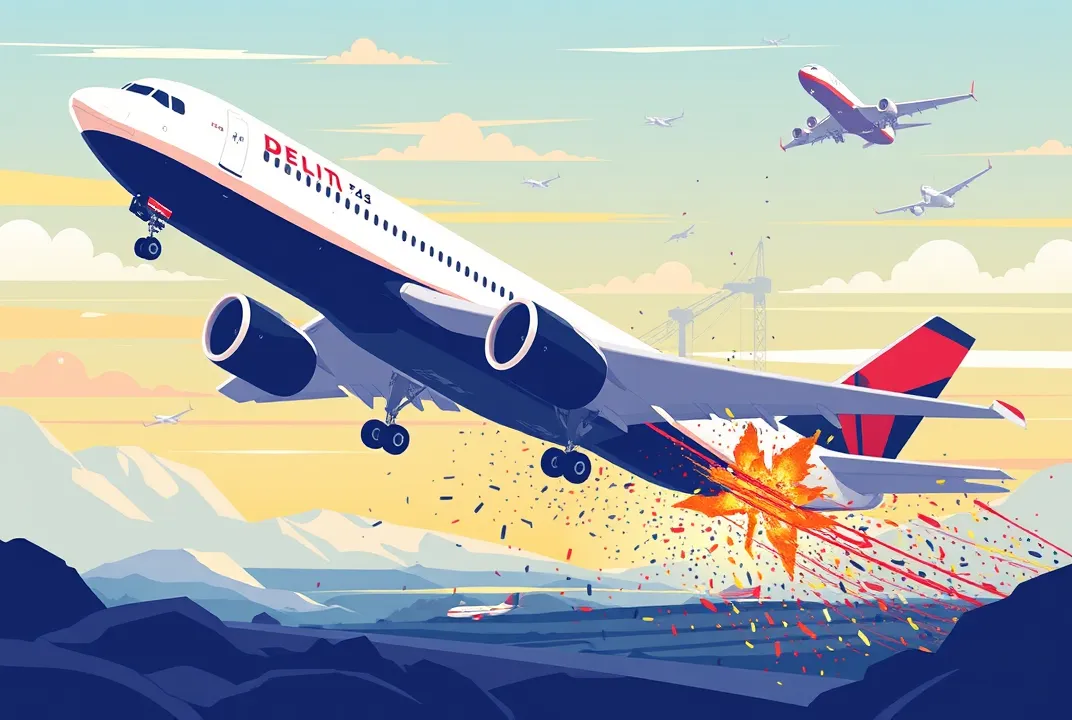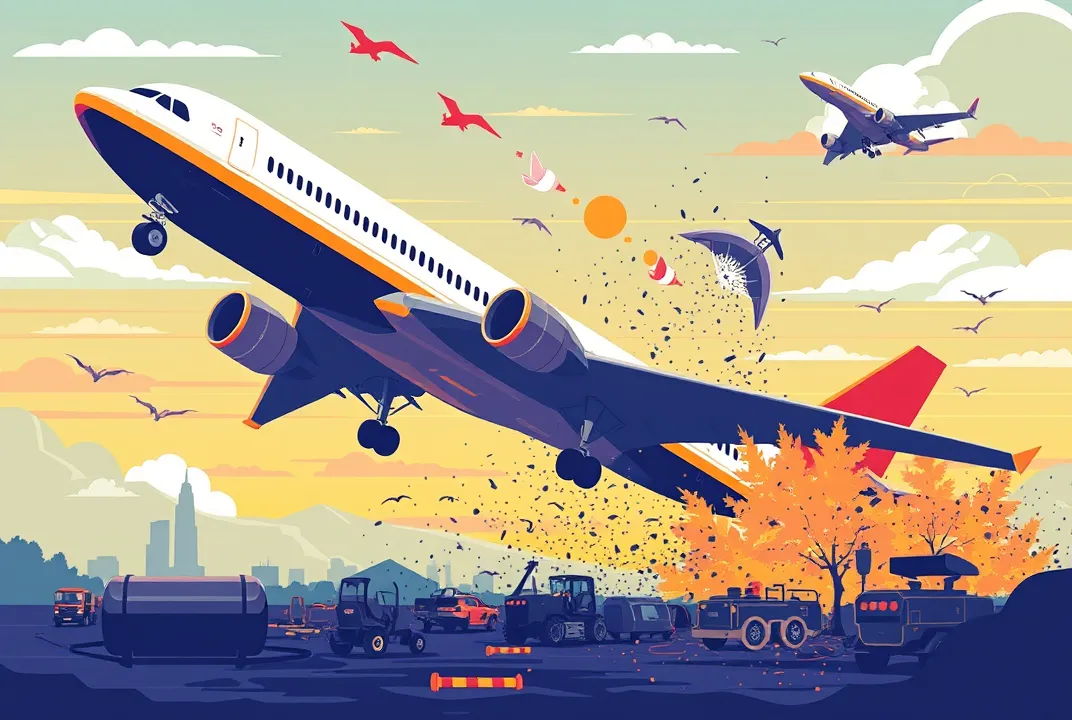Introduction: The Framework of Safety in the Skies
In the vast expanse of the blue skies above us, commercial aviation has become a symbol of freedom and connectivity. However, behind this marvel of modern transportation lies a sophisticated system of regulations established by the Federal Aviation Administration (FAA) to ensure that every flight takes off and lands safely. This article explores the intricate web of FAA regulations and how they shape modern aviation safety, drawing on recent developments, historical lessons, and personal stories from the skies.
The FAA: Guardians of aviation safety
Founded in 1958, the FAA is tasked with regulating all aspects of civil aviation in the United States. Its primary focus is to ensure the safety of air travel, but its responsibilities extend far beyond that. The FAA regulates air traffic control, certifies aircraft and pilots, oversees aviation maintenance, and enforces compliance with safety standards.
Recent Developments in FAA Regulations
In 2023, the aviation industry faced new challenges, including the need for enhanced safety protocols due to the increasing number of flights returning post-pandemic. Notably, the FAA introduced stricter guidelines on pilot training and aircraft maintenance. In light of recent incidents, including a rise in near-miss events, the agency emphasized proactive measures to mitigate risks.
Increased Training Standards
One significant change was the introduction of more rigorous training standards for pilots. According to the FAA, updated simulation training requirements have been implemented, necessitating pilots to undergo more realistic scenarios, including emergency landings and adverse weather conditions. This decision came as a response to studies indicating that better-prepared pilots tend to react more effectively in high-stress situations.
Enhanced Aircraft Inspections
Aircraft maintenance regulations were also reevaluated. The FAA mandated more frequent inspections of older aircraft, particularly those exceeding 15 years of service. This move aims to address mechanical failures that contribute to accidents, emphasizing the importance of regular maintenance checks to ensure flight safety.
The Human Element: Stories from the Cockpit
While regulations are essential, they are only as effective as the individuals implementing them. Pilots and crew members play a pivotal role in aviation safety, often facing life-and-death decisions mid-flight.
A Pilot’s Perspective: The Importance of Training
Captain Sarah Mitchell, a veteran pilot with over 15 years of experience, recalls an incident that reinforced the need for stringent training. During a flight from Los Angeles to New York, a sudden thunderstorm appeared, causing severe turbulence. "In that moment, everything we learned during training kicked in," she shares. "I had to focus on keeping the aircraft steady while reassuring the passengers that we were safe."
Captain Mitchell credits her extensive training, which was recently augmented by the FAA’s new guidelines, for her ability to manage the crisis effectively. "The simulator training we now undergo is more intense and realistic. It prepares us to face unexpected challenges."
Ground Crew: The Unsung Heroes
While pilots often receive the spotlight, ground crew members are equally vital. Air traffic controllers, maintenance personnel, and ramp agents all contribute to making every flight as safe as possible. Their adherence to FAA regulations ensures that everything, from fuel checks to baggage handling, is executed flawlessly.
In a recent interview, John Rios, an air traffic controller at LAX, emphasized the pressure of ensuring safety. "Every day is a balancing act," he notes. "We have to manage incoming and outgoing flights while responding to potential emergencies. The regulations provide a framework for us, ensuring we make the right decisions."
The Evolution of FAA Regulations
Understanding the current landscape of aviation safety requires a look back at how FAA regulations have evolved.
Historical Milestones
The FAA’s history is marked by pivotal events that shaped its regulatory framework. The tragic crash of Eastern Air Lines Flight 401 in 1972, which was attributed to cockpit resource management failures, led to the implementation of Crew Resource Management (CRM) training. This training emphasizes teamwork and communication, utterly changing the way pilots are trained.
Additionally, the September 11 attacks in 2001 prompted a dramatic overhaul of security regulations. The establishment of the Transportation Security Administration (TSA) transferred many security responsibilities from the FAA, ensuring a more comprehensive approach to aviation safety.
The Impacts of Modern Technology on FAA Regulations
The integration of technology into aviation has revolutionized safety protocols and operations. The use of automation, real-time data analytics, and advanced communication systems has reshaped the regulatory landscape.
The Role of Technology in Enhancing Safety
Recent developments, such as the use of Unmanned Aircraft Systems (UAS), have prompted the FAA to develop new regulations. In 2023, the FAA rolled out guidelines for the safe integration of drones into national airspace. These regulations focus on operational limits, pilot certification, and safety measures to prevent collisions with manned aircraft.
Predictive Analytics: The Future of Safety
Moreover, the FAA has begun to leverage predictive analytics to enhance safety. By analyzing vast amounts of data from various sources, the FAA aims to identify potential risks before they escalate into serious incidents. This proactive approach is pivotal in reducing accidents and improving emergency response capabilities.
Conclusion: A Collective Responsibility
As we soar through the skies, it is essential to recognize the collective effort behind every flight. The FAA’s regulations are not mere guidelines but a comprehensive framework designed to safeguard lives. From pilots and crew members to air traffic controllers and ground staff, every individual plays a crucial role in aviation safety.
In the wake of evolving challenges and technological advancements, the FAA continues to adapt its regulations to prioritize safety without stifling innovation. As passengers, we can travel confidently, knowing that a robust system of oversight and care underpins our journeys.
The journey ahead is one of collaboration between regulatory bodies, industry stakeholders, and the flying public, all united by the shared goal of safety in the skies. As we look to the future, the lessons learned from the past will continue to guide us, ensuring that aviation remains one of the safest modes of transportation in the world.


 Delta Plane Crash: Investigating the Causes and Ensuring Future Air Safety
Delta Plane Crash: Investigating the Causes and Ensuring Future Air Safety
 Unraveling the Mystery: Inside the Investigation of Recent Plane Crashes
Unraveling the Mystery: Inside the Investigation of Recent Plane Crashes
 Behind the Cabin Doors: The Dramatic Story of United Airlines' Emergency Landing
Behind the Cabin Doors: The Dramatic Story of United Airlines' Emergency Landing
 The F-35 Crash in Alaska: Unraveling the Mysteries Behind the Incident
The F-35 Crash in Alaska: Unraveling the Mysteries Behind the Incident
 Unraveling the Mysteries: What We Know About the Recent Alaska Plane Crash
Unraveling the Mysteries: What We Know About the Recent Alaska Plane Crash